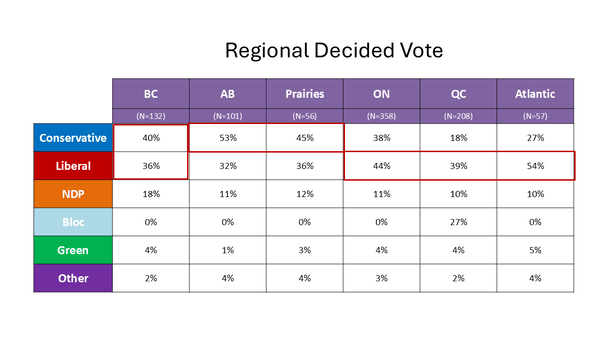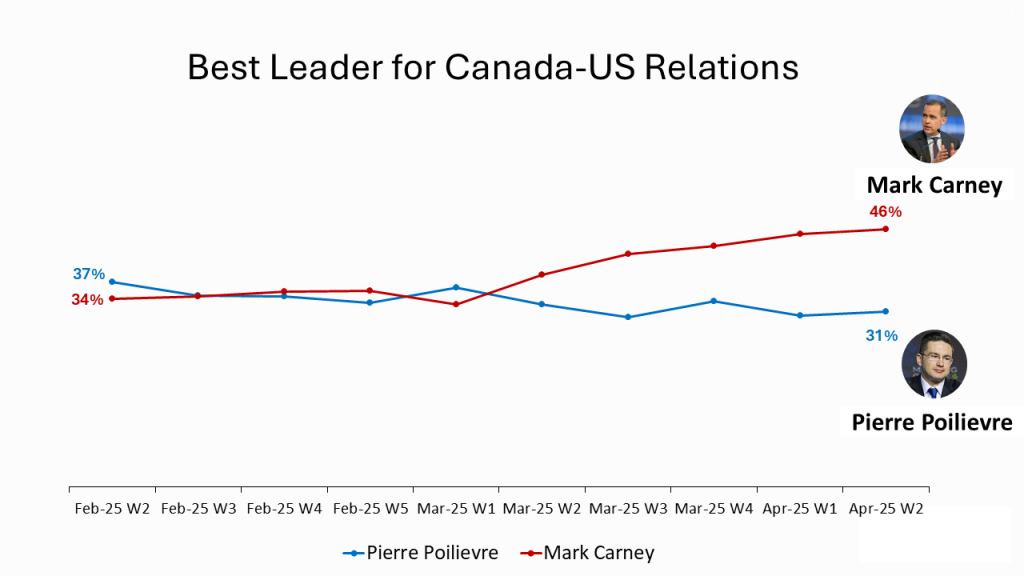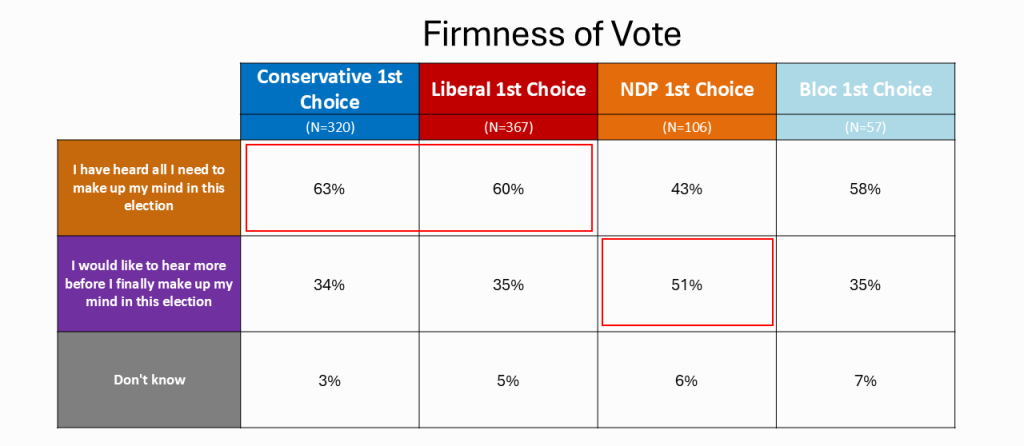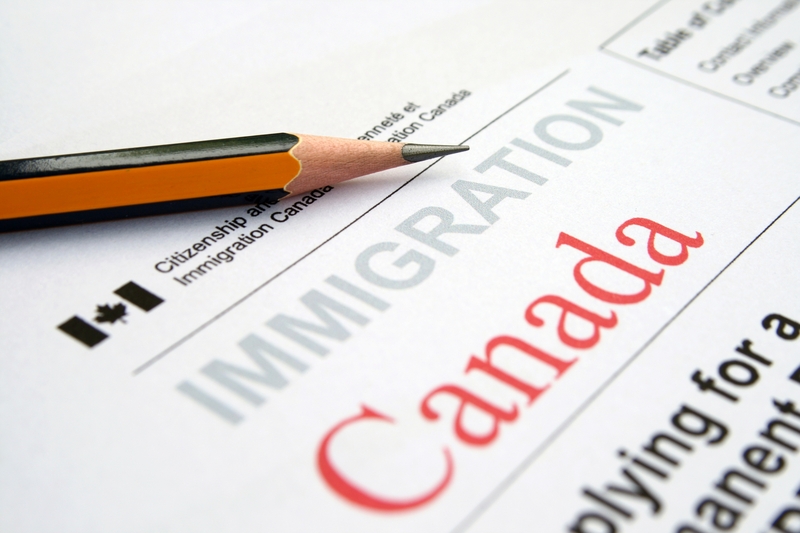
The Liberals maintain a 5-point lead over the Conservatives heading into the debates as Liberal voters’ intentions harden.
These are the topline findings of an online survey of 1,455 Canadian citizens sponsored and conducted by Innovative Research Group Inc. (INNOVATIVE) between April 10th and April 14th, 2025. Results are weighted by age, gender, region, education, and self-reported federal past vote to ensure that the overall sample’s composition reflects that of the actual population according to Census data
A majority of Canadians (51%) continue to approve of the way the Federal government is responding to issues resulting from Donald Trump’s presidency. In contrast, Canadians are split on whether to approve (32%) or disapprove (28%) of Poilievre and the CPC response to Trump, with many uncertain.
Carney continues to be perceived as the best equipped to handle Canada – US relations (15-point gap, 46% to 31%). Carney favourables remain largely unchanged at +17, as do Poilievre’s at -4.

This week we see Carney (44%) and Poilievre (38%) converge a bit on who would be the best Prime Minister.
The impact of the campaign debate continues to favour the Liberals. The Liberal momentum score is +17 with 45% more favourable and just 27% less favourable. Carney’s stand on Trump and tariffs dominate Liberal mentions with a +51 impact score.
The Conservative read/seen/heard divides Canadians with a momentum score of +1. The most common Conservative mentions are general campaign and media (+3), general negative comments (-63), and tougher on crime/three-strike system (+14).
The NDP earned a +6 momentum score. The most common mention are comments about the campaign and ads (+19 impact). Mentions of their polling numbers (-19 impact) are the second most mentioned comment and drag their momentum down.
The Bloc improved their momentum score slightly to +16. This was driven in part by a 10% increase in the frequency of their top RSH mention – putting Quebec interests and sovereignty first.
The bottom line is the Liberals retain a 5-point edge in vote, 40% to the Conservatives’ 35%, and time is running out for the Conservatives.
The vote distribution continues to work well for the Liberals. They have a 27-point lead in the Atlantic, a 12-point lead in Quebec (over a mildly resurgent Bloc), and a 6-point lead in Ontario. The Conservatives have been unable to break out from their western and rural strongholds while the NDP remains marginal.
There is less room for change at this point. A majority of voters say they have heard all they need to make up their minds, including 60% of Liberal and 63% of Conservative first-choice votes. NDP support is softer, with only 43% of NDP first-choice voters saying they have heard all they need to make up their mind.

This means there are steadily fewer center-right votes available for the Conservatives, especially as advance polls open this week and ballots are cast. The Liberals, on the other hand, not only stand in the lead but can continue to pull from the NDP. The Bloc remains a distant second in Quebec. The pressure is on the opposition parties to take advantage of the debate stage to knock voters loose from the Liberals.
Anyone who claims to know for sure what will happen two weeks from now has not paid attention to the last few weeks. While the Liberals are ahead, a large share of their current support base is cross-pressured. They are pulled towards the Liberals by Carney and the Trump issue. But the ongoing time for a change mood is pushing them a way. If the campaign focuses on Canada’s parties and leaders, the Liberals could still run into trouble. But one or two more intervention by Donald Trump could be exactly what the Liberals need to lock the race up.
Click here to read the full report!
































